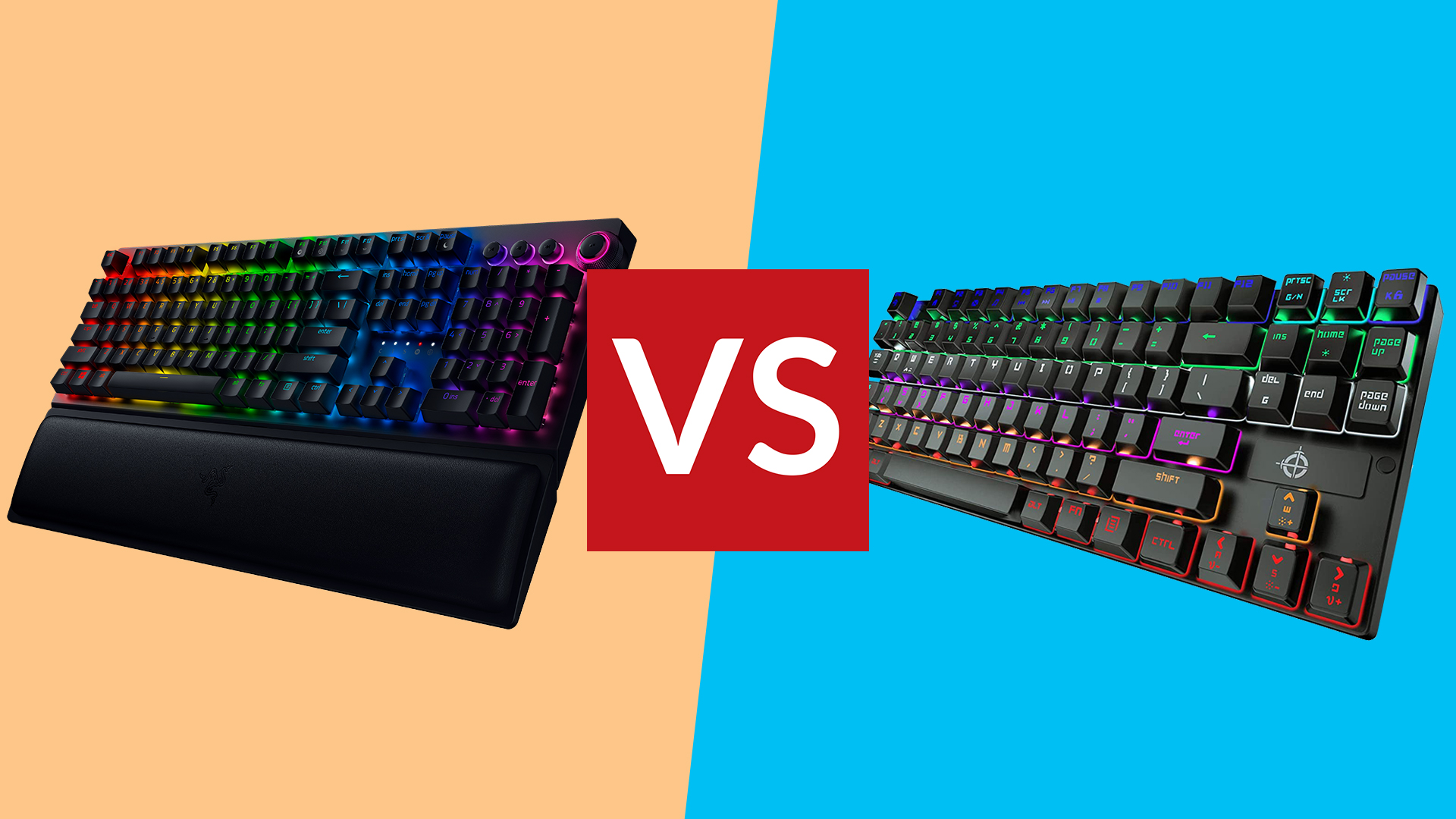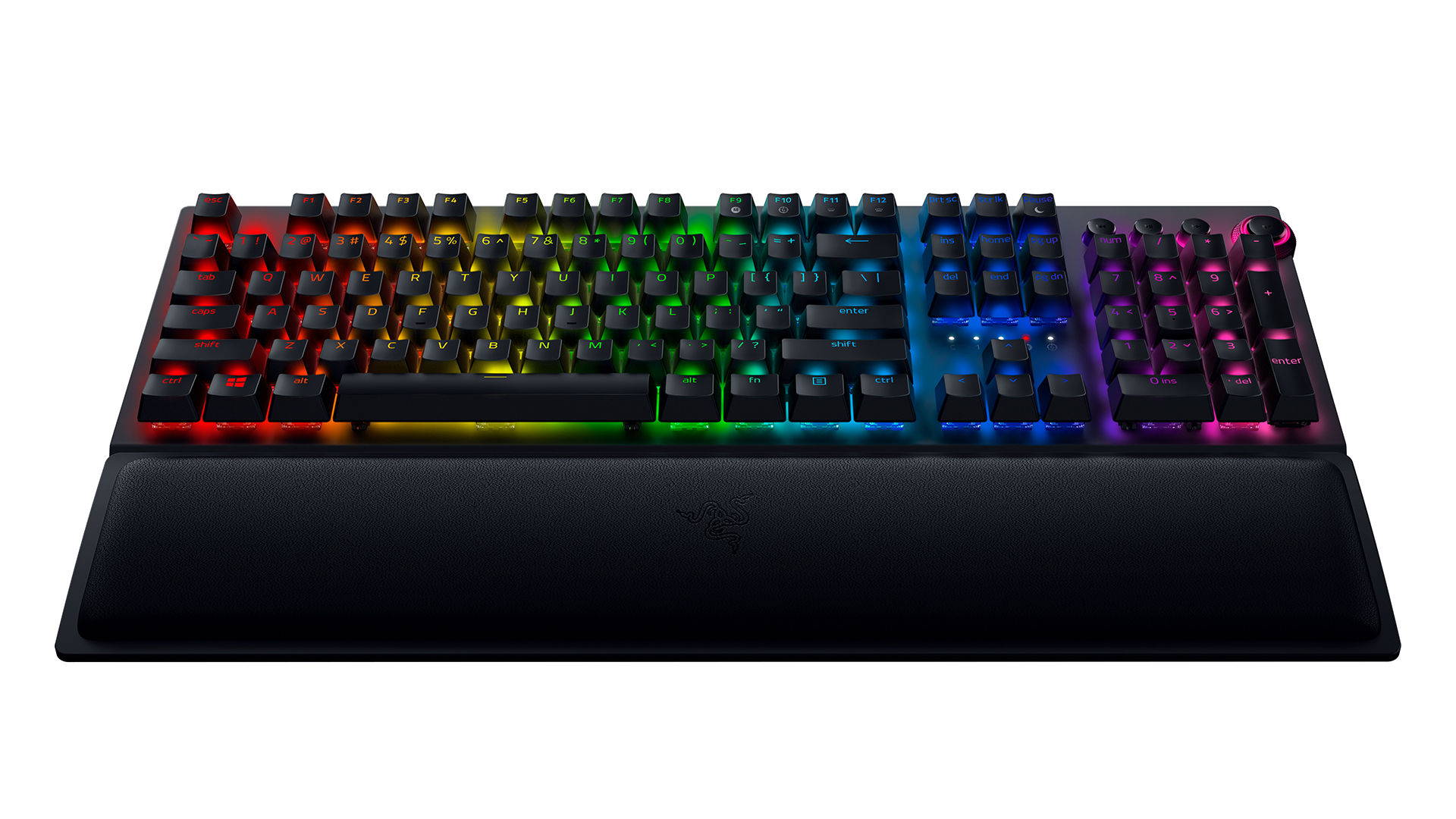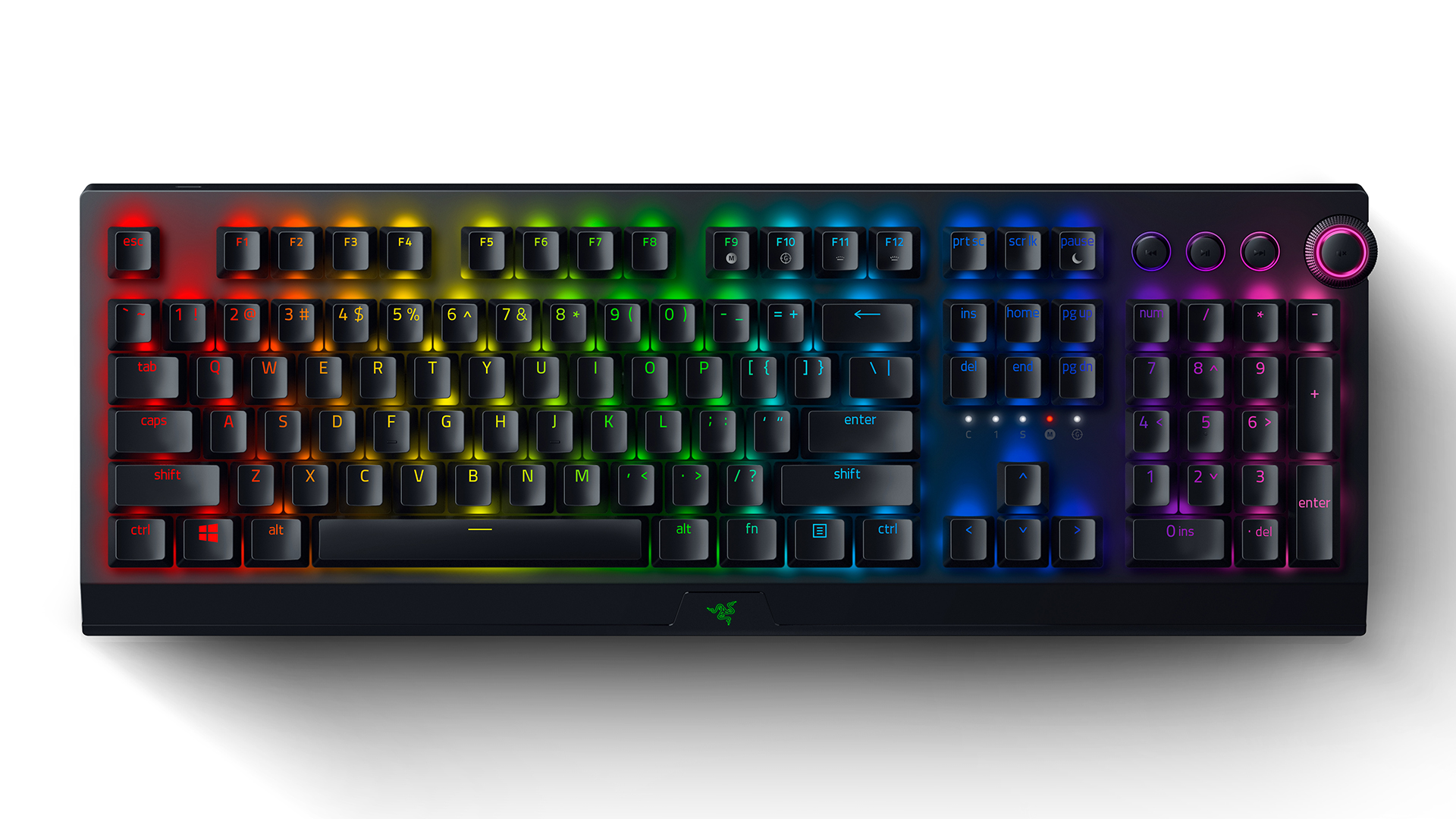STOGA Mechanical Gaming Keyboard vs Razer Blackwidow V3 Pro: which gaming keyboard is right for you?
Our STOGA Mechanical Gaming Keyboard vs Razer Blackwidow V3 Pro guide looks at two great mechanical gaming keyboards with very different approaches


There’s no easy way to pick a new gaming keyboard – that’s where our list of the best gaming keyboards might come in handy – but even once you have things narrowed down, there are so many questions to keep in mind. What kind of switches do you want? Do you demand a set of keys where the RGBs will let you know the temperature of your processor? And, the big question, how much do you really want to spend?
One of the biggest questions we often get asked at T3 about gaming keyboards (and gaming accessories in general) is if it is worth it to spend big on major-brand products, or if you can get a great experience from something cheaper. The answer is not always clear cut, though.
When it comes to the pricing of gaming keyboards, the sky truly is the limit but the important thing to remember is that mechanical gaming keyboards won’t automatically set you back a fortune. While we’re looking at two very different keyboards here, both the budget STOGA Mechanical Gaming Keyboard and Razer Blackwidow V3 Pro will happily play your favourite games. They will just feel different and there won’t be quite the same number of bells and whistles at the more budget end of the scale.
The STOGA Mechanical Gaming Keyboard is a solid option at a great price point far below the $100/£100 mark, while the wireless mechanical Blackwidow V3 Pro is one of the priciest models in Razer’s entire line up. We’ll compare both here and work out whether you really need to spend the earth for your needs – after all, you could get one of these headphones and have enough left over for a gaming mouse and gaming headset all the for what the other keyboard costs on its own.
Let’s compare the STOGA Mechanical Gaming Keyboard and the Razer Blackwidow V3 Pro.
STOGA Mechanical Gaming Keyboard vs Razer Blackwidow V3 Pro: Price
Due to their mechanical nature, gaming keyboards for PC are inevitably more expensive than their membrane counterparts. While there are some membrane-based gaming keyboards out there, by and large gamers are on the hunt for a mechanical keyboard to make each key press count without any lag and a smooth tactile response.
This means that mechanical gaming keyboards can climb high into the hundreds which is not ideal if you’re gaming on a budget. Add in a dedicated gaming mouse and surround sound gaming headset and kitting yourself out can be exceptionally painful on your bank balance.
Get all the latest news, reviews, deals and buying guides on gorgeous tech, home and active products from the T3 experts
The first keyboard in our comparison is designed specifically not to hurt the zeros though. The STOGA Mechanical Gaming Keyboard is one of our favourite gaming keyboards under £100/$100. The standard price is $59.99 and £48.99 in the UK. This is a solid enough outlay to feel like you are still spending a good sum but not enough for a full set of peripherals to go over budget. This is still slightly cheaper than Razer’s lowest offering, the Razer Cynosa which is sitting at around the $60 mark
Then there’s the Razer Blackwidow V3 Pro. This is a wireless gaming keyboard built for luxury, with a price tag to match – it's currently sitting at $229.99 in the US and £229.99 in the UK.
This is an eye watering price point but this is a keyboard that delivers in spades. Given the demand for lag-free performance as well as RGB LED key hunger, there are very few wireless mechanical gaming keyboards on the market. Thankfully, the Razer delivers.

STOGA Mechanical Gaming Keyboard vs Razer Blackwidow V3 Pro: Design & Features
Yes, you want to buy a gaming keyboard that’s right for your gaming style but given that you have to look at it every day, there’s no shame in buying something aesthetically pleasing too. Both the STOGA and the Razer are particularly easy on the eyes. The STOGA Mechanical Gaming Keyboard still has the RGB lighting effects now almost mandatory on gaming keyboards, but it also has a minimalist look with no space for extra knobs and dials.
The Blackwidow on the other hand opts for a slick matte finished aluminium chassis, comfortable plush wrist rest, and a programmable lit dial alongside three dedicated media keys. Of the two, it looks distinctly more of a gaming keyboard but if you’re spending this on PC gaming, you’re not going for Apple minimalism.
The Razer also comes with its proprietary Synapse program for making sure that each key is lit to your tastes. While the STOGA comes with a number of programmable lighting arrangements, you won’t get the 16.8 million colours that Razer is offering.
Obviously, the big sell on the Blackwidow V3 Pro is its wireless compatibility. This works across both Bluetooth and Razer’s Hyperspeed tech so there are two ways to connect along with a wired option when you’re popping the keyboard on charge. Whichever way you’re playing though, this wireless tech is a lag free experience. Gone are the fears of waiting for your button presses to react on screen and Razer’s wireless tech is an impressive development.

STOGA Mechanical Gaming Keyboard vs Razer Blackwidow V3 Pro: Switches
If you’re new to the world of gaming keyboards, you might be confused by the total obsession with different kinds of switches. This a term for the key caps and mechanical internals that make each press count. A manufacturer called Cherry is best known for keyswitches and has a selection of colourful names used by multiple keyboard manufacturers. You can find a breakdown of the different types here on Cherry’s site but each switch has a different feel, speed, and sound.
Cherry defines its switches by colour but each one requires specific pressure and delivers unique feedback. Cherry MX Red, for instance, only needs 45g of pressure so can be hammered quickly without exhausting your fingers, while Cherry MX Brown requires 55g and has a quieter sound. This makes Red better for games requiring fast reflexes while the Brown switch will be for someone who might type all day and game at night. Finding the right switch for you is a sometimes personal quest so it’s important to read up on switches before you buy.
Both gaming keyboards here buck the Cherry trend and have gone for their own proprietary switches. In Razer’s case this is to put its own name on things, while STOGA is focussing on a somewhat cheaper offering so has gone for its own switches. It merely calls the switches on the Stoga Mechanical Keyboard ‘Blue’ which means its taking inspiration from Cherry’s MX Blue range. You’ll need a little more force to fire these down – 60g in the official Cherry version – but there is a satisfyingly loud click and spring here. Be warned though, if you share a home office, your fellow human might want to don noise-cancelling headphones. The click is real.
The Blackwidow Pro V3 offers up two different kinds of proprietary switches when you buy. The Razer Green Switch offers a more tactile gaming option and audible click, while the Yellow Switch emphasises silence with a linear switch. The Yellow also has added noise dampeners to try and prevent someone from murdering you while you type and game, so do consider your company when you’re picking your switch.

STOGA Mechanical Gaming Keyboard vs Razer Blackwidow V3 Pro: The Verdict
As it so often does, your choice here comes entirely down to budget. If you want the wireless, slick, multicoloured, comfortable option from one of the world’s biggest manufacturers, you’re going to have to pay for the privilege in the form of the Razer. It's worth every penny, but it's a lot of pennies.
STOGA though, manages to be a plucky upstart with clicky keys, and a cheap and cheerful selection of RGB options that won’t break the bank. Neither is going to let you down, but you’re going to be voting with your wallet here.
Louise Blain is a journalist and broadcaster specialising in technology, gaming, and entertainment. She has a weekly consumer tech slot on BBC Radio Scotland and is the presenter of BBC Radio 3's monthly Sound of Gaming show. She can also regularly be found on BBC Radio 4, BBC Five Live, and The Evolution of Horror podcast as well as writing for GamesRadar and NME. Louise loves finding ways that tech can make our lives better every day and no, she doesn't have enough smart lighting yet.
